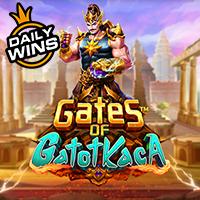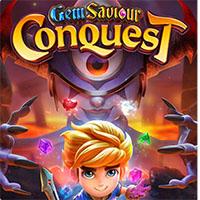

















Building upon the foundation laid in How Ancient Rituals Inspire Modern Game Mechanics, it becomes evident that the psychological power of ritualistic elements in games extends beyond mechanics alone. These elements tap into deep-seated human tendencies, shaping not only how players engage with a game but also how they perceive themselves and their community within virtual spaces. Exploring these psychological dimensions reveals how ritual-inspired features can be harnessed to create more immersive, meaningful, and transformative gaming experiences.
1. The Psychology Behind Rituals: How Ancient Practices Shape Player Mindsets
a. The role of ritualistic elements in establishing psychological immersion in games
Rituals inherently create a sense of structure and predictability, which fosters psychological immersion by providing players with a clear framework for action. For example, in games like Dark Souls, the repeated act of resting at bonfires and preparing for battles mirrors ancient initiation rites, anchoring players in a ritual cycle that signifies progress and transformation. These ritualistic mechanics serve as anchors, grounding the player’s experience and enhancing emotional engagement by evoking familiarity and anticipation rooted in primal human rituals.
b. Emotional triggers rooted in ancient rituals and their impact on engagement
Ancient rituals often evoke strong emotional responses—such as awe, reverence, or fear—that are leveraged in modern game design to heighten engagement. For instance, the use of ceremonial sounds, sacred symbols, and ritualistic gestures in games like God of War elicit feelings of reverence and awe, deepening emotional investment. These triggers activate limbic responses, fostering a visceral connection that motivates continued play and emotional investment.
c. Cognitive associations: linking modern game mechanics with primal ritual symbolism
Cognitive science suggests that symbols from ancient rituals are deeply embedded in human memory, influencing perception and decision-making. Modern mechanics like leveling systems or quest cycles can mirror ritual sequences—initiation, trial, transformation—creating subconscious associations that reinforce game narrative. For example, the ritual of ‘ascension’ in role-playing games echoes shamanic initiation rites, forging a primal link that enhances player motivation through familiar archetypes.
2. Rituals as a Tool for Player Identity and Community Building
a. How ritual-inspired mechanics foster a sense of belonging among players
Ritualistic mechanics such as clan initiation ceremonies or synchronized group events serve as bonding processes, fostering a sense of belonging. In games like Fortnite, seasonal rituals—special dances or coordinated celebrations—become shared cultural moments that unify players. These rituals mimic ancient communal practices, creating social cohesion and a collective identity that sustains engagement over time.
b. The influence of ritual symbolism on player self-perception and role adoption
Ritual symbols can influence how players perceive their roles within a game. For instance, adopting a ceremonial armor set or performing specific in-game rituals can reinforce a player’s self-image as a hero or guardian, akin to shamanic or warrior archetypes in ancient societies. This symbolic role adoption enhances immersion and personal investment, transforming gameplay into a form of identity exploration.
c. Case studies of multiplayer rituals enhancing social cohesion in gaming environments
In MMORPGs like World of Warcraft, guild ceremonies and coordinated raid rituals serve as modern equivalents of tribal rites, strengthening social bonds. These shared experiences foster trust, cooperation, and a collective sense of purpose. Research indicates that such ritual participation increases retention and enhances the overall sense of community, illustrating how ritualistic mechanics serve as social glue, echoing ancient practices of communal bonding.
3. Symbolism and Archetypes: Unlocking Deep Psychological Responses
a. The use of archetypal symbols from ancient rituals to evoke subconscious reactions
Archetypal symbols like the hero’s journey, sacred fire, or the labyrinth are prevalent in game narratives, tapping into collective unconscious themes identified by Carl Jung. For example, the hero’s quest in The Legend of Zelda mirrors archetypal stories of initiation and transformation, eliciting subconscious reactions that resonate universally. These symbols serve as a language of the psyche, enabling players to connect emotionally through familiar motifs rooted in ancient ritual symbolism.
b. How ritual motifs activate innate psychological archetypes in players
Ritual motifs activate archetypes such as the Warrior, Sage, or Shadow, which influence player responses and choices. For instance, the use of sacred relics or ceremonial rites within a game can evoke archetypal themes of transformation and mastery, encouraging players to project their inner psychological narratives onto the game world. This activation fosters deeper emotional engagement and a sense of personal growth.
c. Designing game narratives that leverage symbolic rituals for emotional resonance
Integrating symbolic rituals into storylines—such as initiation rites, sacred ceremonies, or mythic quests—can amplify emotional resonance. For example, Horizon Zero Dawn employs ritualistic storytelling around ancient technologies and ceremonial rites, creating a mythic depth that resonates on a subconscious level. Such narrative strategies deepen emotional investment by aligning game events with archetypal patterns familiar across cultures.
4. Ritual Repetition and Flow State: Enhancing Player Focus and Satisfaction
a. The connection between ritual repetition and achieving flow states in gameplay
Ritual repetition—such as daily quests or crafting cycles—mirrors ancient practices of repeated rites that induce trance or flow states. Mihaly Csikszentmihalyi’s research indicates that such repetitive, goal-oriented activities foster a state of deep focus and enjoyment. For example, in Stardew Valley, daily routines and seasonal cycles create a rhythm that cultivates flow, making gameplay inherently satisfying and addictive.
b. How ritual-like mechanics encourage persistence and mastery
Ritual-like mechanics such as incremental skill development or ritualized combat sequences motivate players to persist through mastery. The act of ritualistically performing a sequence—like unlocking new abilities—activates a psychological need for competence, reinforcing continued engagement. The sense of progress and ritualized achievement, as seen in Dark Souls, exemplifies how mechanics evoke primal satisfaction associated with rites of passage.
c. Balancing novelty and familiarity to maintain psychological engagement
Effective game design combines ritual familiarity with novel elements to sustain engagement. Introducing new ritual motifs while maintaining core repetitive mechanics prevents stagnation and promotes curiosity. For example, seasonal events in multiplayer games introduce fresh ceremonial themes that rejuvenate the ritual cycle, maintaining players’ psychological investment over long periods.
5. Rituals, Mystery, and the Unconscious Mind: Creating Depth in Game Design
a. Incorporating mysterious ritual elements to tap into players’ curiosity and subconscious
Mysterious rituals—hidden symbols, cryptic ceremonies—trigger curiosity and activate the unconscious. Games like Bloodborne employ cryptic symbols and ambiguous rituals that invite players to interpret and explore, engaging the subconscious mind. This mystery promotes deeper emotional involvement, as players are compelled to uncover hidden meanings, akin to ancient initiations shrouded in secrecy.
b. The role of ritual ambiguity in fostering personal interpretation and emotional investment
Ambiguous rituals allow players to project personal meanings, fostering a sense of ownership and emotional investment. For instance, the cryptic symbols in Dark Souls or Hades invite interpretation, creating a personalized mythic experience. Such ambiguity mirrors ancient sacred rites, which often relied on symbolism open to multiple interpretations, thus deepening engagement on a psychological level.
c. Utilizing ritual symbolism to evoke a sense of sacredness and significance
Embedding ritual symbolism—sacred objects, ceremonial gestures—imbues game elements with a sense of sacredness. For example, the use of relics and sacred sites in The Witcher 3 enhances the narrative’s depth, evoking feelings of reverence. This sacred framing prompts players to treat game actions as meaningful rituals, fostering emotional resonance and a perception of significance akin to ancient rites.
6. Ethical and Cultural Considerations in Ritual-Based Game Mechanics
a. Respecting cultural origins of ritual symbols and practices in game design
When integrating ritualistic themes, designers must honor their cultural origins. This involves consulting cultural experts and avoiding stereotypes or misrepresentations. For example, when depicting indigenous rituals, developers should partner with cultural representatives to ensure authenticity and respect, preventing cultural insensitivity and fostering genuine appreciation.
b. Avoiding cultural appropriation while leveraging ritualistic themes for psychological impact
Cultural appropriation occurs when symbols are used without understanding or respect, risking offense. To avoid this, game creators should focus on universal themes or create fictional rituals inspired by real practices, ensuring they do not misrepresent or diminish sacred traditions. Thoughtful design maintains psychological impact while respecting cultural boundaries.
c. Designing inclusive rituals that resonate universally without misappropriating traditions
Inclusive design involves creating rituals that evoke the psychological power of rites without specific cultural references. For example, universal themes like renewal, purification, or challenge can be depicted through fictional ceremonies accessible to diverse audiences. This approach allows for meaningful ritual mechanics that foster community and engagement without cultural insensitivity.
7. From Rituals to Player Transformation: Psychological Impacts and Outcomes
a. How ritual experiences in games can lead to real-world psychological change
Rituals in gaming—such as meditative practices or achievement ceremonies—can foster mindfulness and self-awareness. Research indicates that repetitive ritual-like activities can promote neuroplasticity and resilience. For example, repetitive calming rituals in virtual environments can reduce anxiety and promote emotional regulation, leading to tangible psychological benefits beyond gameplay.
b. The potential for rituals to foster mindfulness, reflection, and personal growth during gameplay
Rituals encourage reflection, a key component of mindfulness. Games that incorporate reflective rituals—like meditation or moral choices—can prompt players to consider their values and decisions. For instance, Journey emphasizes meditative exploration, fostering a sense of presence and personal insight, illustrating how ritual mechanics can catalyze growth and self-awareness.
c. Future directions: harnessing ritual psychology for therapeutic and educational gaming
As understanding of ritual psychology grows, designers are exploring therapeutic applications—using ritual-like mechanics to aid in trauma recovery, stress reduction, and education. Games like SPARX employ ritualized storytelling to promote mental health, demonstrating the potential for ritual-based design to foster real-world well-being and learning.
